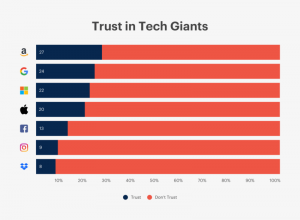
Should I have a digital marketing strategy, or is it enough to just use some online tactics to take my business forward?
Business owners are known to work in their company, solving operational tasks, more than they work on their company, defining strategic goals. It’s the routine of day-to-day tasks and the stress of growing a business that creates time pressure on non-strategic issues.
In order to plan for company growth, it’s best to take some time, sit down with the management team and define business goals that are realistic and tangible. Once these are defined you can align your digital marketing activities with these goals and set-up clear plans on what to do.
1. Setting business goals
Working on defining them seems simple since you already know where you need to go and where the major pain points are at this point. However, most of the goals that come up in planning sessions are too generic. “We need more sales” or “We need to break even this year” are not clear enough to be measured and what is not measured is not achieved.
To set good goals you need to define them as SMART: Specific, Measurable, Attainable, Relevant, and Time Based. Achieving this means business goal meetings need upfront preparation and a focus on existing numbers.
Setting your SMART business goal
The management meeting reaches a straightforward conclusion: your company has been maintaining a constant level of sales, with costs slightly increasing. Overall, the business is profitable, but margins do not allow for growth. If a sales dip comes current profit is not enough to support the cost level for more than one month.
The team also believes there is a need for one more sales person, hiring three more software developers, and investing in a partnership with a new technology company, that could bring an unfair advantage against the competition.
Together you define your main business goal for the year: We want to grow the business.
To make this SMART, you need the basic numbers for your company. Let’s assume the following are correct:
- $ 1,5M revenues, $ 1,3M cost, 13 percent profitability.
- Current client base: six corporate, eight SME.
- Large client purchases $ 200K/year. Average sales cycle is four months. Current conversion rate is five percent.
- Small client purchases $ 37K / year. Average sales cycle is one month. Current conversion rate is eight percent.
Your team identifies that growing sales by 100 percent, and a profitability rate of 25 percent is a good target for the year. This means you need an additional six corporate and eight SME clients.
Specific: Define the numbers: growth 100 percent, profitability level 25 percent, acquire 14 new clients.
Measurable: How and when you measure progress. Monthly? Quarterly?
Attainable: Think about how will you achieve it and consider if your current team can deliver. E.g. Implement a marketing strategy that allows potential clients to discover my business and engage with my sales team. We will provide remarkable information that supports clients identify and solve their own business pain points.
Relevant: Why will achieving this goal support business growth? Adding 14 clients to our portfolio allows our company to grow while increasing profitability and providing room for investment.
Time-Based: Define a time period of the goal. E.g. Achieve goal in 12 months.
Your new SMART goal should look like this:
Within the next 12 months we will sign 14 new clients totaling $ 1.5M, and achieve 25 percent profitability. Six new clients will be large enterprises and eight SMEs. We will track progress quarterly for large clients and monthly for SMEs. We will achieve this by asking for referrals from our current clients, implement a digital marketing strategy and attend industry relevant events. This will allow us to add new sales capacity, increase our product development team and invest in technology partnerships that increase unique value proposition.
2. Translating business goals into marketing goals
Having a SMART business goal defined, you need to translate it into a marketing goal.
Business Goal: Increase revenue by 100 percent within 12 months.
Sales Goal: Close 14 new clients, six corporate, and eight SMEs within 12 months.
Considering your conversion rates, your company needs to generate 120 corporate leads and 100 SME leads over the next year.
Marketing Goal: Generate 220 new leads, 120 corporate, and 100 SME within next 12 months.
Step one is to break your goal into smaller milestones, e.g. per quarter:
Sales Goals
- Q1: two new SME clients
- Q2: two new SME, one new corporate
- Q3: two new SME, two new corporate
- Q4: two new SME, three new corporate
Assuming conversion rates maintain throughout the year, how do we translate these quarterly sales goals into marketing goals?
- Q1: 25 SME leads, 20 corporate leads
- Q2: 25 SME leads, 40 corporate leads
- Q3: 25 SME leads, 60 corporate leads
- Q4: 25 SME leads, 80 corporate leads
Using a digital marketing strategy that gives results means including inbound marketing, which requires time and effort. You need to plan ahead to ensure you achieve the desired results. Start small, and increase with time as you identify what works and what doesn’t.
We recommend using an agile markting approach and revisit periodically. Check if your conversion rates go up or down, sales cycle drops or lead generation works best for SMEs. Adjust how you will reach growth and profitability. It may be that you can sign eight new corporate clients in total, or that it is easier to close down 50 SMEs.
3. Implementing marketing actions
To achieve the marketing goals you need to drive qualified traffic to your website and convert that traffic into leads. From there the sales team can pick up and convert leads into clients. This means creating and distributing content and content offers to a relevant audience. It also means content should be mapped on the buyer’s journey which is structured in: awareness, consideration and decision stages.
Here are the basic things you need to do:
- Create a buyer persona so your marketing team knows who they address. Involve your sales team in creating the best persona.
- Create one content offer every month that your persona finds valuable. Every offer should have its own landing page, where you convert visitors into leads by asking for contact information. Capture with each download a key question, to find out more about their needs and pains.
- Create three to four blog posts a month that respond to your buyer persona questions. Use these posts to promote your content offer and lead your visitors down the conversion funnel.
- Track conversion rates for these offers and create additional content based on the topics that perform in lead generation. Map your content to your buyer persona’s journey and make sure you have at least one offer for each stage.
- Integrate marketing processes with sales process to ensure that:
- Sales process leads as efficient as possible.
- Marketing gets real time information from sales on customer feedback and pain paints. This helps adjust the messages and content offers.
- To understand more about why sales and marketing integration is important check this presentation.
- Sales process leads as efficient as possible.
- Measure results and adjust your strategy.
Focusing on site visitors is good, but it should not be the main goal. Online traffic can easily be driven through advertising for example, but you will not get highly qualified visitors. That means you won’t be able to convert them because they don’t fit your buyer persona. Making your website visible to the right audience is much more important.
Here are a few metrics you want to keep an eye on:
- Total number of visitors and leads
- Visitor to lead conversion
- Lead to client conversion
- Top performing content / topics
Another example of transforming business goals into marketing actions
Business Goal: Attract two new investors and raise 500,000 USD within six months.
Management Goal: Identify and connect with 20 new investors.
Marketing Goal: Generate 60 investor leads.
Marketing Focus: Offer investors an information hub for your industry.
- Awareness stage:
Create content that provides investors information on: current market outlook and projected growth, market attractiveness, return on investment in your market, stories on exits and IPOs, attention points for investors. Create an ebook that visitors can download for more information.
- Consideration stage:
Create and distribute a market analysis document for investors. Set-up a webinar where one of your specialists can offer an inside look into how your company works and performs.
- Decision stage:
Offer a download with the investment presentation for your company
What is your biggest challenge when it comes to translating business goals into marketing actions?
Image credit: David Wall
(217)







